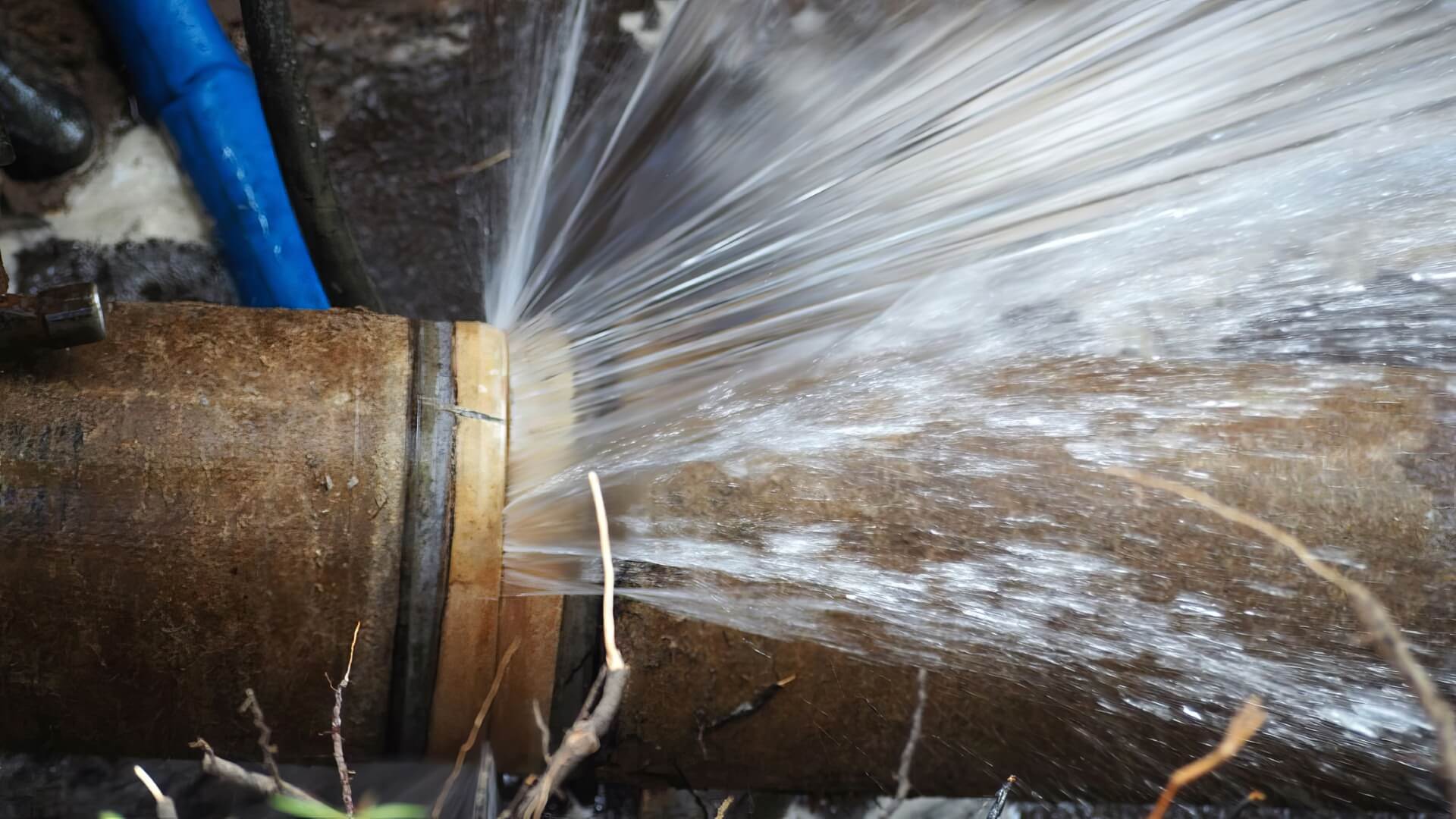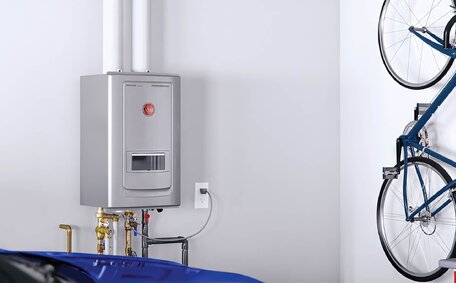Introduction to Baking Soda and Vinegar
Many people use a mixture of baking soda and vinegar for household cleaning tasks.
The natural cleaning approach with baking soda and vinegar is popular due to their safe, non-toxic nature, and being typically less costly than commercial cleaners. When used as standalone cleaning products, both baking soda and vinegar offer useful benefits in various applications around the home and for plumbing issues.
Vinegar excels at dissolving soap scum and hard water stains due to its acidic composition. Vinegar is effective for cleaning kitchen countertops, windows, tiles, grout, and various appliances.
By sprinkling baking soda on surfaces and forming a paste, you can leverage its alkalinity and gentle abrasiveness for thorough scrubbing.
Nevertheless, when you mix baking soda and vinegar, they react to produce carbon dioxide gas and a fizzing effect, as often demonstrated in science experiments.
What’s left is mostly water and sodium acetate – a result with little cleaning efficacy.
Though the fizzing from the reaction may appear effective, it’s the individual properties of vinegar and baking soda that truly contribute to their cleaning power.
The Chemical Reaction Between Baking Soda and Vinegar
When you mix baking soda with vinegar, a chemical reaction occurs between the base and the acid. Baking soda acts as a base due to its bicarbonate ion, which can neutralise acids.
Baking soda is a chemical compound known as sodium bicarbonate (NaHCO3). Vinegar contains acetic acid (CH3COOH), which is an acidic solution.
Here is the chemical reaction that takes place when baking soda and vinegar mix:
- Sodium bicarbonate (baking soda) + acetic acid (vinegar) --> carbonic acid + sodium acetate + water
- NaHCO3 + CH3COOH --> salt water + CH3COONa + H2O
The acetic acid in vinegar engages in chemical reactions with sodium bicarbonate, instantly creating carbonic acid (H2CO3) and sodium acetate (CH3COONa). As the carbonic acid quickly decomposes into carbon dioxide (CO2) and water (H2O), it produces the fizzing effect. The carbon dioxide gas rises energetically, almost as if to blow up into foam, creating that characteristic hissing sound.
While this reaction may seem effective at cleaning because of the satisfying foam, it serves primarily to neutralise the acid in vinegar and the base in baking soda.
The power of vinegar cleaning, along with baking soda, greatly benefits various areas around your home due to their individual characteristics, not just chemical reactions. Vinegar’s acidity allows it to dissolve buildup and stains, while baking soda can also vigorously scrub away grime. Discussions about cleaning baking soda and vinegar separately often reveal superior cleanliness compared to their combined use.
The Fizzing Reaction Explained
As described, when the acetic acid in vinegar and baking soda react, one of the products is carbonic acid. The fizzing reaction that occurs when baking soda and vinegar are combined is caused by the rapid formation of carbon dioxide gas.
It is this carbon dioxide that forms the bubbles and fizzing foam when the baking soda and vinegar mixture is agitated. As the gas is produced, it rushes out of the solution, creating all of those lively, hissing bubbles.
Although fizzing appears as a sign of active cleaning, it is simply a reaction between soda and vinegar that produces carbon dioxide gas.
The fizzing and foaming is a side effect of the chemical reaction and neutralisation that occurs when an acid and a base cancel each other out.
The noticeable fizzing of baking soda and vinegar is mainly due to carbon dioxide formation and does not create an effective cleaner. This reveals that these two ingredients, baking soda and vinegar, do not essentially translate to superior cleansing efficacy.
The Resulting Mixture
After the fizzing reaction between baking soda and vinegar subsides, The resulting concoction is predominantly water, infused with traces of sodium acetate that can help loosen remaining residue. Sodium acetate is the salt produced when the acetic acid in vinegar react with the sodium bicarbonate in baking soda.
After consideration, I decided that although sodium acetate is non-toxic, the residue left post-reaction between vinegar baking soda can’t effectively cleanse surfaces solo. The resulting solution does not have significant cleaning power on its own without the original acidic or abrasive properties of the vinegar and baking soda.
Despite visual interest, the fizzing and foaming they don’t serve as effective cleaners, but instead neutralise the acidity of the vinegar and the alkalinity of the baking soda. What remains after the reaction ceases is a mild mixture of water and sodium acetate, without the beneficial cleaning characteristics of the original ingredients.
Why The Fizzing Doesn’t Equal Cleaning
The fizzing reaction that occurs when baking soda and vinegar are mixed together is often assumed to signify effective cleaning. The apparent cleaning effect from baking soda and vinegar fizzing is mostly a result of the chemical reaction neutralising the cleaning power of the ingredients.
Here’s why the fizzing is not a reliable indicator of superior cleaning compared to individual use:
- The fizzing is caused by carbon dioxide gas being released, not by any cleaning agents being formed.
- What’s left after the reaction is mainly water and a small amount of sodium acetate, which has minimal cleaning ability.
- The fizzing serves to cancel out the acidity of the vinegar and the alkalinity of the baking soda that provide their cleaning benefits.
Despite the satisfying sight of foamy bubbles, the fizzing does not enhance cleaning. The true cleaning agents are the acidic vinegar and abrasive baking soda prior to their combination.
The Cleaning Power of Baking Soda and Vinegar Separately
While baking soda and vinegar are often used together, they actually provide greater cleaning power when used separately. Here are some of the key benefits of using baking soda and vinegar on their own for cleaning tasks:
Vinegar
Due to the acetic acid, vinegar, which has a lower pH level, contrasts with the high pH efficacy of baking soda to:
- Vinegar, with its acidic nature, can dissolve mineral deposits and hard water stains.
- Remove soap scum buildup from bathtubs and showers
- Clean and shine stainless steel appliances and chrome fixtures
- Descaling kettles, coffee makers and other appliances prone to mineral buildup
- Unclog shower head fixtures by breaking down and flushing away mineral sediment
For pristine laundry, substitute laundry detergent with full-strength vinegar, or maintain with a diluted vinegar solution. Apply diluted vinegar on common surfaces, wait, then wipe clean.
Baking Soda
Clean baking soda is a mild abrasive that can:
- Scrub away grease, dirt and stains from countertops, sinks, tubs, and other surfaces
- Clean and deodorise your oven, microwaves, and refrigerators
- Employing soda clean methods, polish chrome fixtures, stainless steel, and porcelain
- Remove burned on food and grease from pots and pans
- Freshen up cutting boards by removing odour and stains
For strong cleaning jobs, opt for a paste made from baking soda mixed with a bit of water or vinegar. Let the mixture sit, scrub, then rinse. Baking soda is generally safe for multiple surfaces.
How to Use Baking Soda for Cleaning
Baking soda is a versatile cleaning agent that can be used throughout the home, including for plumbing issues. Here are some tips for harnessing the power of baking soda:
- To tackle clogged drains or unpleasant odours, dispatch half a cup of baking soda down the drain, chased by half a cup of vinegar. The ensuing fizzing action will assist in dislodging any buildup. Rinse with boiling water.
- To freshen laundry, add 12 cup baking soda to the wash cycle. It helps remove odours and soften fabrics.
- Create a paste from 3 tablespoons of baking soda with a little water, apply it to grout lines, let sit, then scrub to clean and whiten.
- To scrub away stains, Make a paste from baking soda and just enough water to moisten. Gently rub onto surfaces with a sponge or cloth.
- To deodorise cutting boards, apply half a cup of baking soda and give it a good scrub with a lemon segment, then rinse.
To tackle clogged drains or unpleasant odours, dispatch half a cup of baking soda down the drain, chased by half a cup of vinegar. The ensuing fizzing action will assist in dislodging any buildup. Rinse with boiling water.To freshen laundry, add 12 cup baking soda to the wash cycle. It helps remove odours and soften fabrics.How to Use Vinegar for Cleaning
Vinegar is an effective household cleaner due to its acidic properties that allow it to break down grime and residue. Here are some tips for using vinegar for cleaning:
- For hard water stains and mineral deposits, mix white vinegar with water in equal parts in a spray bottle, apply to affected areas, let it sit, then scrub and rinse.
- To clean tile or linoleum, blend one cup of vinegar with roughly 4 litres of warm water, mop the area, let it stand briefly, then rinse well.
- Soak showerheads in a bowl filled with undiluted white vinegar overnight to allow the vinegar to dissolve built-up mineral deposits.
- To deep clean blocked drains and pipes, pour 1/2 cup baking soda down the drain followed by 1 cup vinegar. Let the fizzing reaction occur before flushing with hot water.
Always spot test vinegar on an inconspicuous area first. For tough stains, let the vinegar sit for longer before wiping away. Rinse surfaces thoroughly after cleaning with vinegar.
Vinegar is an effective household cleaner due to its acidic properties that allow it to break down grime and residue.
Smart Methods to Clean with Both Baking Soda and Vinegar
While baking soda and vinegar largely neutralise each other when combined, there are some instances where using them together in sequence can provide marginal benefits:
- Apply vinegar first to help soften mineral deposits and soap scum, let sit briefly, then scrub with a baking soda paste to lift residue.
- For eradicating deposits, initiate a soda mixed vinegar reaction down the drainage system. Let the soda mixed with vinegar fizzing reaction occur, then flush with boiling water to help clear debris.
- To clean tile grout, spray vinegar into the lines and let penetrate for 5 minutes before scrubbing with a baking soda paste using an old toothbrush.
The vinegar helps break down buildup while the baking soda provides gentle abrasion to lift grime. Just avoid mixing the ingredients directly together right away.
These sequential applications of baking soda and vinegar can marginally enhance cleaning performance over using just one. The vinegar retains its acidity briefly before being neutralised by the baking soda.
When to Call a Professional Plumber
While baking soda and vinegar can be handy for minor plumbing issues, there are times when it’s best to call in a professional plumber for assistance.
Quakers Hill Plumbing should be contacted for any of the following scenarios:
- Major clogs that persist after trying baking soda and vinegar mixtures
- Leaking pipes, faucets, or water heaters that require repair
- No hot water due to problems with your hot water system
- Sewer line blockages that cause sewage backups
- Strange noises from your pipes indicating larger issues
- Low water pressure problems throughout the home
- Malfunctioning toilets that need replacement parts or repairs
- Gas leaks - these can be extremely hazardous
Our licensed professionals are equipped to handle any plumbing challenge. Email us to access our 24/7 emergency services after agreeing to our terms and conditions. Arrange a plumbing appointment with our experienced team at [email protected], and subscribe for news and future updates.
While baking soda and vinegar can be handy for minor plumbing issues, there are times when it’s best to call in a professional plumber for assistance.
Major clogs that persist after trying baking soda and vinegar mixturesLeaking pipes, wage backups





